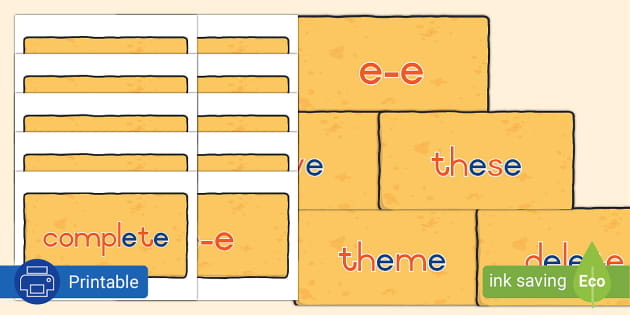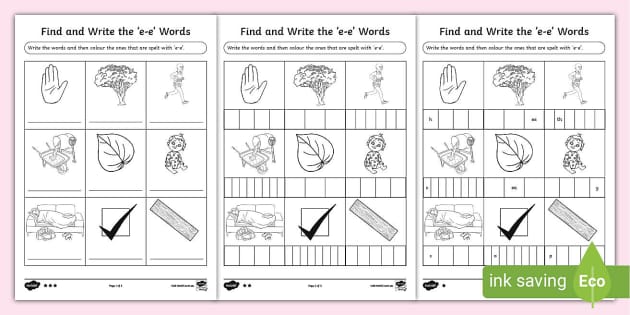Unveiling è‹ é›¨ çž³: Exploring Accents, Pronunciation, And The Power Of 'Eyes' In Language And Culture
In the vast and intricate world of language, certain character combinations can pique our curiosity, hinting at deeper meanings or fascinating stories. One such intriguing string is "è‹ é›¨ çž³". At first glance, it might appear to be just a collection of foreign characters, but upon closer inspection, it opens a gateway to understanding not only specific cultural references but also the nuanced mechanics of global languages, particularly the versatile letter 'e' and the profound symbolism of 'eyes'.
This article will delve into the multifaceted nature of "è‹ é›¨ çž³", breaking down its components, exploring the linguistic journey of the accented 'e', and uncovering the cultural significance of 'eyes' (çž³) in various contexts. Prepare to embark on a linguistic and cultural adventure!
The Enigma of è‹ é›¨ çž³: A Glimpse into Chinese and Beyond
Let's begin by dissecting "è‹ é›¨ çž³". This sequence of characters is written in traditional Chinese, and transliterated, it typically refers to "Su Yu Tong" or "Su Yu's Pupil/Eye". The character 'çž³' (tóng) specifically means 'pupil' or 'eye'. This immediately suggests a connection to vision, perception, or perhaps even a character possessing extraordinary ocular abilities.
- Best Hairstyle For Ladies
- Best Shows From The 2000s
- Do Men Like Their Nipples Sucked
- What Happened In 2014 Pop Culture
- Sliced Bob Haircuts
Our reference data directly points to "è‹ çž³ - 说书人.mp3," which translates to "Su Yu Tong - Storyteller.mp3." This strongly indicates that "Su Yu Tong" is likely a name, possibly of a person, a character, or even a specific piece of media, given its association with a storytelling audio file. This isn't an isolated instance of 'çž³' appearing in significant titles. For example, the popular Chinese drama/novel "黄金瞳" (Huáng Jīn Tóng), known in English as "Golden Pupil" or "Golden Eyes," immediately comes to mind. This title, classified under genres like Adventure, Martial Arts, Fantasy, and Supernatural, highlights how 'eyes' can be central to a narrative, often bestowing unique powers or insights upon a protagonist.
Other instances in our data further solidify the cultural importance of 'eyes': "茶色㠄瞳 é»’ã „çž³" (Tea-colored eyes, black eyes) from a Japanese context, and "ç «é˜²å¥³ã ®çž³" (Fireproof woman's pupil/eyes), again hinting at unique visual characteristics. Even names like "韩瞳" (Han Tong) from another audio file suggest 'çž³' can be part of personal identifiers, perhaps implying a characteristic trait.
So, while "è‹ é›¨ çž³" might simply be a name, its literal meaning of "Su Yu's Pupil/Eye" places it within a rich cultural tapestry where eyes often hold symbolic weight, representing power, destiny, or extraordinary perception in storytelling.
- Pubic Area Exfoliant
- Date Ideas Rainy Day
- Blonde Hair Fall Colors
- Harley Quinn Costume Makeup
- Dating Sites For 40 And Above
Decoding the 'è': A Journey Through Accented 'e's
Beyond the intriguing 'çž³', the presence of 'è' (e with grave accent) in "è‹ é›¨ çž³" prompts us to explore the fascinating world of accented letters. While 'è' is part of a Chinese character here, the grave accent itself is a common feature in many European languages, particularly French and Italian. These accents aren't just decorative; they are essential linguistic elements that can profoundly alter pronunciation and even the meaning of words.
The Many Faces of 'e' and Its Accents
The letter 'e' is remarkably versatile, and its pronunciation and role can change dramatically depending on the accent it carries. Let's look at some common variations:
- The Acute Accent (é): As seen in French words like 'fusée' (rocket), the acute accent typically indicates a "closed e" sound, similar to the 'e' in "hey" (/e/). Our data highlights that "this French lesson explains how to pronounce the e with the acute accent mark (l'accent aigu): é."
- The Grave Accent (è): This is the accent found in 'è‹ é›¨ çž³. In French, as in the word 'flèche' (arrow), the grave accent usually signifies an "open e" sound, akin to the 'e' in "bet" (/ɛ/). It's crucial to note that "only three French vowels can take the grave accent: à, è, and ù." On the letter 'e', "the grave accent is a" key indicator of its pronunciation.
- The Circumflex Accent (ê): Appearing in French words like 'tête' (head), the circumflex often denotes a former 's' sound that has been dropped, and it can influence the vowel's length or quality.
- The Diaeresis (ë): This accent, as in French 'Noël' (Christmas), indicates that the vowel should be pronounced separately from the preceding vowel, preventing a diphthong.
As the data states, "Les accents sur « e » sont des éléments essentiels qui peuvent modifier la prononciation et la signification des mots en français." This underscores their importance, not just as diacritics, but as integral parts of the language's structure.
Pronunciation Nuances of 'e'
Beyond the accents, the letter 'e' itself can have various pronunciations, even without diacritics. Our data lists four primary ways to pronounce 'e':
- /e/ (closed e): As in the 'e' in "hey".
- /ɛ/ (open e): As in the 'e' in "bet".
- /ə/ (schwa): A neutral vowel sound, like the 'a' in the name "Tina".
- Silent: In some contexts, 'e' can remain completely silent.
These variations highlight the complexity and richness of spoken language, where a single letter can carry a spectrum of sounds.
Interestingly, the data also mentions 'Ǝ ǝ' (turned E or reversed E), an additional letter used in African languages like those employing the Pan-Nigerian alphabet. This further illustrates how the fundamental shape of 'e' can be adapted and reinterpreted across different linguistic systems.
Typing Accented Characters: A Digital Bridge to Global Communication
In our increasingly digital world, knowing how to type these accented characters is crucial for accurate communication. Fortunately, both Mac and Windows operating systems offer intuitive methods:
For Mac Users: Intuitive Shortcuts
Mac users benefit from highly intuitive shortcuts for typing accented letters. The "Long-Press Method" is particularly handy:
- To get accented vowels on a Mac, you can "press and hold the" letter key (e.g., 'e'). A small pop-up menu will appear with various accented versions of that letter.
- Alternatively, for a more specific approach, "hold down the Option key, and while holding it down, type the letter e; then release those keys and type the letter that you want the accent to." For example, Option + e, then release and type 'e' again for 'é'.
For Windows Users: Alt Codes and Key Combinations
Windows users also have several methods at their disposal:
- Alt Codes: "Using the “e with accent alt code”, you can type “e” with any of the accent marks over it (è, é, ê, ë or È, É, Ê, Ë) using the Windows keyboard." These numeric codes (e.g., Alt + 0232 for è) are designed for typing symbols and accented characters.
- Ctrl Combinations: A quick method for specific accents is to "Press Ctrl+' and let go. Then, type e and you’ll get é." For capital letters, you can use the Caps Lock key in conjunction with these methods.
These digital tools bridge the gap between different writing systems, allowing us to accurately represent words from languages like French, Italian, or even Portuguese, where
Article Recommendations
- Little Presents For Friends
- Nasty Ice Cream Flavors
- Does Sofia Vergara Have Fake Boobs
- Easy Maintenance Hair Colour
- Nails Mix And Match



Detail Author:
- Name : Kaci Kovacek
- Username : loma.lueilwitz
- Email : sierra.connelly@ondricka.com
- Birthdate : 1986-01-28
- Address : 7696 Issac Spur Roscoeville, NE 24178-9956
- Phone : (385) 765-6137
- Company : Heaney, Kohler and Ziemann
- Job : Restaurant Cook
- Bio : Expedita incidunt non cupiditate assumenda omnis soluta. Ipsam adipisci quia quo iure voluptatem. Adipisci eum labore atque odio vitae veritatis. Sunt accusantium dignissimos aut.
Socials
twitter:
- url : https://twitter.com/nolan.kreiger
- username : nolan.kreiger
- bio : Veniam quas soluta qui quae ducimus qui. Eius autem facere repellendus est id numquam odio aliquid. Minus itaque sint repudiandae eaque aut optio animi.
- followers : 3805
- following : 2218
tiktok:
- url : https://tiktok.com/@nkreiger
- username : nkreiger
- bio : Impedit iusto neque voluptate voluptas minus ex animi.
- followers : 833
- following : 2382
linkedin:
- url : https://linkedin.com/in/nkreiger
- username : nkreiger
- bio : Vero excepturi aliquam cupiditate praesentium.
- followers : 4756
- following : 2703
instagram:
- url : https://instagram.com/nolankreiger
- username : nolankreiger
- bio : Aut est quia consequatur alias commodi inventore. Nam occaecati et aut sed laborum.
- followers : 6598
- following : 1018
facebook:
- url : https://facebook.com/kreiger1987
- username : kreiger1987
- bio : Quisquam vel et rerum ipsum vel. Sint ut quo vel aut ad.
- followers : 2596
- following : 446